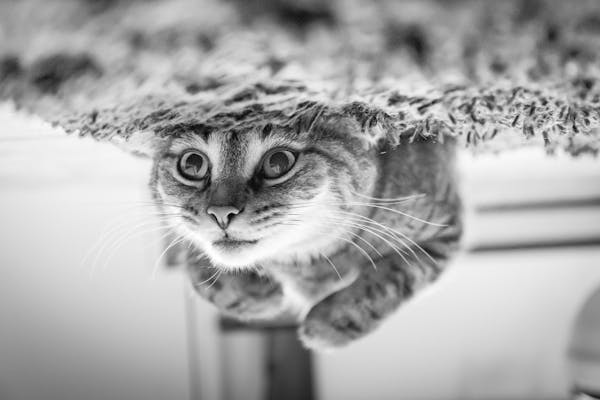Choosing the right diet for your cat can be a challenging decision. With the rising popularity of raw food diets and the convenience of commercial cat food, many pet owners find themselves asking: which is truly better? Let’s dive into the pros and cons of both diets to help you make an informed choice.
What Is a Raw Diet?
A raw diet for cats typically consists of uncooked muscle meat, bones, and organs, mimicking what cats would naturally eat in the wild. Advocates of this diet often believe that it aligns with a cat’s natural carnivorous instincts and promotes optimal health.
Components of a raw diet:
- Raw meat (chicken, beef, rabbit, etc.)
- Organs like liver or kidney
- Raw bones (for calcium)
- Sometimes small amounts of vegetables or supplements
What Is Commercial Cat Food?
Commercial cat food is widely available and comes in two primary forms: dry kibble and wet canned food. These are usually made from meat, grains, vitamins, and minerals. They are formulated to meet the nutritional requirements set by various pet health organizations, such as the Association of American Feed Control Officials (AAFCO).
The Benefits of a Raw Diet
- Mimics a Natural Diet:
A raw diet is designed to replicate what cats would eat in the wild. Since cats are obligate carnivores, their bodies are optimized for digesting meat rather than grains and carbohydrates, which are often found in commercial foods. - Improved Coat and Skin:
Many cat owners report that feeding raw improves their cat’s coat quality, making it shinier and reducing shedding. - Better Digestion:
Because raw food doesn’t contain the fillers and additives found in many commercial diets, some cats may experience improved digestion and less stool odor. - Higher Protein and Moisture Content:
Raw diets are typically richer in protein and moisture, both of which are essential for your cat’s health. Higher moisture content can aid in kidney function and prevent urinary tract issues, which is particularly important for cats prone to such problems.
The Drawbacks of a Raw Diet
- Bacterial Contamination:
Raw meat can carry bacteria such as Salmonella and E. coli, which can be dangerous not only to cats but also to humans who handle the food. If raw food isn’t prepared, stored, or served properly, it increases the risk of contamination. - Nutritional Imbalance:
A poorly planned raw diet can lead to nutrient deficiencies or excesses. For instance, feeding only muscle meat without bones or organs could deprive cats of essential nutrients like calcium and taurine. - Cost and Time-Consuming:
A raw diet often costs more than commercial food and requires careful planning, preparation, and storage. It can be time-consuming for busy pet owners. - Vet Resistance:
Many veterinarians are skeptical about raw feeding due to the risks of bacterial contamination and the difficulty of ensuring a balanced diet. Without expert guidance, it can be easy to make nutritional mistakes.
The Benefits of Commercial Cat Food
- Complete and Balanced Nutrition:
Most commercial cat foods are designed to meet the complete nutritional needs of cats, with added vitamins, minerals, and amino acids like taurine. This eliminates the guesswork involved in ensuring your cat is getting a balanced diet. - Convenience:
Commercial food is easy to store, measure, and serve. It’s especially beneficial for pet owners with a busy schedule. - Safety and Regulation:
Commercial pet foods undergo strict quality control and must meet safety standards. This minimizes the risk of harmful bacteria or contamination, making it a safer option for your cat and your household. - Variety of Options:
There are many types of commercial cat food available, from grain-free and high-protein options to specialized formulas for cats with health conditions like urinary tract issues, allergies, or obesity.
The Drawbacks of Commercial Cat Food
- Lower Quality Ingredients:
Some commercial cat foods, especially lower-cost brands, contain fillers, artificial preservatives, and grains that are not ideal for carnivorous animals like cats. This can lead to obesity, digestive issues, and lower overall health. - Moisture Deficiency:
Dry kibble, in particular, lacks sufficient moisture content. Cats, by nature, are not great water drinkers, and a diet of primarily dry food can contribute to dehydration and increase the risk of urinary tract problems. - Potential for Allergies:
Some cats may develop food sensitivities or allergies to ingredients commonly found in commercial foods, such as grains or certain types of meat by-products.
Which Is Best for Your Cat?
There is no one-size-fits-all answer when it comes to the raw diet versus commercial cat food debate. The best choice depends on your cat’s specific needs, your lifestyle, and your willingness to invest time and resources into their diet.
- A raw diet may be a better fit for owners who have time to prepare and balance meals and want to feed their cats a more natural diet. It can be highly beneficial for cats who thrive on high-protein, low-carb meals, and it may improve their overall vitality, digestion, and coat health.
- Commercial cat food is a more practical and widely accepted option, providing a balanced and safe diet without the hassle of preparation. It’s ideal for pet owners seeking convenience, especially with the availability of high-quality, grain-free, and protein-rich commercial brands that mimic some benefits of raw feeding.
Conclusion: A Balanced Approach
For some cat owners, a balanced approach—feeding a combination of high-quality commercial food and raw or homemade meals—can offer the best of both worlds. No matter which diet you choose, it’s crucial to consult with your veterinarian to ensure your cat’s specific nutritional needs are met.
Ultimately, the key to a healthy cat is not just the type of food you choose, but also making sure their diet is balanced, safe, and aligned with their health needs.

